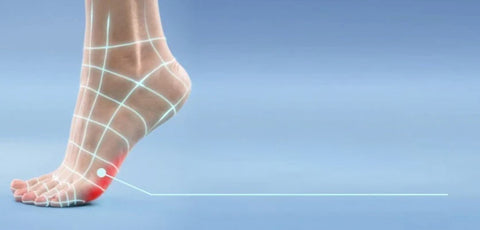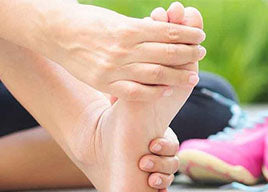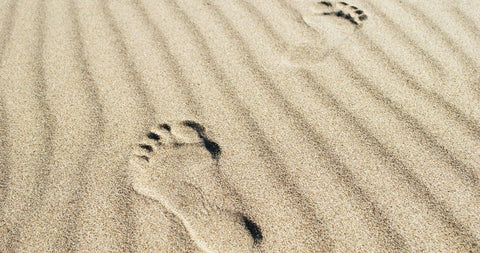
Ball of foot pain
There are a lot of structures in the ball of the foot that can become painful if put under stress. It could be caused by general wear and tear, living your life in heels, playing too much high-impact sports, being overweight or another condition you may have.
This is not a diagnostic tool. This healthcare professional does not endorse Scholl products and were paid by the makers of Scholl for their time producing this video
What is metatarsalgia?
Metatarsalgia is the name given to pain in the ball of the foot. The pain affects the area underneath the metatarsal bones at the front of the foot and is a common point of pain as this is where most weight is distributed when standing, walking and running.

What are the symptoms of metatarsalgia?
Metatarsalgia can be caused by a number of different conditions including overuse, being overweight and wearing high heeled shoes. The pain can feel like a burning or aching sensation, a feeling like there’s a small stone stuck under the foot. Pain can be more intense when pressure is applied from standing, walking or running.
What are the symptom triggers?
Pain in the ball of the foot can be made significantly worse by standing, running or walking. The pain usually develops gradually over time, rather than suddenly.
What causes ball of foot pain?
Although metatarsalgia is usually caused by pressure on the ball of the foot, there can be other factors at play:
- Participating in high impact sports like running or tennis where extra pressure is placed on the feet.
- Increased pressure from being overweight.
- Bone abnormalities in the feet where narrow, high-arched or flat feet can increase the chances of pain.
- Joint and foot conditions like arthritis, gout, bunions, bursitis, Morton’s neuroma, hammer toes and stress fractures can cause inflammation and pain.
Older people, people with naturally lean skinny feet, and people with diabetes are at more risk of metatarsalgia.
How to treat ball of foot pain?
You can help reduce the pain in the ball of the feet by trying the following:
- Stretching your Achilles tendon (if this is a problem for you) to strengthen the foot muscles and decrease the pressure on your forefeet.
- Wearing metatarsal supports, arch supports and shock-absorbing shoe insoles and inserts.
- Reducing any strenuous activities that involve placing too much stress and impact on your feet.
- Avoiding high-heeled shoes and wearing wide-fitting flat shoes with a well-cushioned sole.
- Applying an ice pack to the area for 20 minutes a day.
- Losing weight if you are overweight.
- Resting your feet and evelvated, where possible, regularly.
Please seek medical advice if the pain does not improve despite following self-help tips, if the pain increases and interferes with your everyday activities, if you are diabetic, if you have any tingling or loss of sensation in your foot or if you see a change in the shape of your foot.
All information presented on these web pages is not meant to diagnose or prescribe. In all health care matters, please contact your healthcare professional
To explore related products, click here.
UK/SC/0319/0049d
